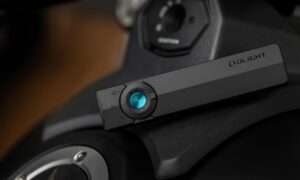Compatible ink cartridges are third-party alternatives to original equipment manufacturer (OEM) cartridges produced by companies such as Brother, HP, Canon, and Epson. Unlike remanufactured cartridges, which are refilled and refurbished from used OEM products, compatible cartridges are entirely new units designed and manufactured by independent companies to function in specific printer models. These cartridges aim to provide comparable performance to OEM cartridges at a significantly lower cost, though their quality, reliability, and environmental impact can vary depending on the manufacturer’s design precision, ink formulation, and quality control processes.
The fundamental purpose of a compatible ink cartridge is to replicate the OEM cartridge’s mechanical and electronic characteristics. This involves precise replication of cartridge geometry, ink delivery pathways, and chip communication systems. Because modern printers rely heavily on microchip authentication and ink level monitoring, third-party manufacturers must engineer their cartridges to interface seamlessly with proprietary firmware. The cartridge body, often made from injection-molded thermoplastics like ABS or polypropylene, must match OEM tolerances within fractions of a millimeter to ensure airtight seals and correct alignment with the printer’s ink feed ports. Deviations in dimensional accuracy can result in air leaks, ink flow inconsistency, or nozzle clogging.
The ink chemistry used in compatible cartridges is a major factor influencing performance. Manufacturers of compatible inks often reverse-engineer OEM ink compositions to approximate viscosity, surface tension, and colorant concentration. Typical ink viscosity for piezoelectric or thermal inkjet systems ranges from 2 to 5 mPa·s, while surface tension is maintained near 35 mN/m to ensure proper droplet formation. However, differences in solvent composition, pigment dispersion, or dye solubility can cause deviations in print quality. For example, dye-based compatible inks may produce less color saturation or fade more quickly under UV exposure, while pigment-based inks may settle or agglomerate if the particle size distribution is not tightly controlled. High-quality compatible cartridges use purified pigments and resin binders that stabilize particle dispersion, but low-cost options may lack such refinement, resulting in sedimentation and printhead obstruction over time.
A critical component of compatible cartridges is the microchip that communicates with the printer. OEM cartridges contain encrypted chips that monitor ink levels, track usage, and authenticate the cartridge. Compatible cartridge producers must design chips that emulate these communication protocols to bypass error messages such as “cartridge not recognized.” This process, often involving microcontroller programming and firmware analysis, can be challenging because printer manufacturers frequently issue firmware updates that alter authentication parameters. Consequently, some compatible cartridges become temporarily unusable after such updates until their firmware is reengineered. This technological cat-and-mouse dynamic underscores the proprietary control printer manufacturers exert over consumable markets.
From a fluid mechanics perspective, compatible cartridges must deliver ink to the printhead under consistent pressure and flow conditions. Most cartridges employ a capillary system or sponge-based reservoir that regulates ink supply and prevents flooding. The internal sponge density and porosity directly affect ink release rate. If the sponge is too dense, it can restrict flow, causing banding or faint prints; if too porous, it can lead to leakage or air ingress. Advanced compatible cartridges utilize multi-layer sponge structures or air pressure equalization chambers to mimic OEM performance, but budget versions may omit these design refinements.
The economics of compatible cartridges are one of their primary attractions. They can cost anywhere from 30% to 80% less than OEM cartridges, making them appealing to cost-conscious users, particularly in high-volume environments. However, the lower price point often correlates with greater variability in quality control. Reputable third-party brands invest in laboratory testing for colorimetry, pH balance, and shelf-life stability, while lower-tier manufacturers may produce ink with inconsistent color balance or chemical impurities that can corrode printhead components. Such impurities, including residual metal ions or unfiltered particulates, can alter electrical properties at the printhead’s nozzles or physically block the ink ejection orifices.
Environmental impact is another complex aspect of compatible cartridge use. While compatible cartridges can reduce consumer costs and offer an alternative to disposable OEM models, not all are designed with recyclability in mind. Some third-party manufacturers use plastics that are difficult to reclaim or lack take-back programs. However, others emphasize eco-friendly production methods and participate in recycling networks to minimize landfill waste. The environmental advantage of compatible cartridges depends largely on whether they are reused or properly recycled at the end of their life cycle.
Performance comparisons between OEM and compatible cartridges depend heavily on the printer type and use case. In high-resolution photo printing, OEM cartridges typically maintain a clear advantage because their inks are precisely color-matched and chemically optimized for their printers’ printheads. Compatible inks may produce subtle color shifts or reduced gamut in photographic work. For general office printing, however, high-quality compatibles can provide nearly indistinguishable results in terms of sharpness and saturation. Durability testing often shows that OEM inks exhibit superior fade resistance due to more stable dye and pigment chemistries, though top-tier compatible inks have narrowed this gap in recent years.
From a technical reliability standpoint, compatible cartridges can introduce risks to the printer hardware. Poorly designed cartridges may leak ink, leading to contamination of internal components such as the carriage assembly and encoder strip. Air bubbles introduced through improper sealing can cause misfiring nozzles or dry printing. In piezoelectric systems, where ink viscosity directly affects actuator performance, off-spec ink formulations can strain the piezo elements, potentially shortening printhead life. Therefore, consistent manufacturing standards and rigorous testing are essential for ensuring that compatible cartridges do not compromise printer integrity.
So to sum things up, compatible ink cartridges occupy a complex position in the printing ecosystem. Technically, they represent a balance between cost efficiency and engineering precision, offering users an affordable alternative to OEM consumables while presenting challenges in terms of reliability, chemical stability, and compatibility with proprietary systems. Their effectiveness depends on how well the manufacturer replicates the physical, chemical, and electronic properties of OEM cartridges. As inkjet technology continues to advance, the most reputable compatible cartridge producers are investing in better ink chemistry, precision molding, and chip emulation to close the gap in quality. For consumers and businesses, selecting compatible cartridges from established brands that adhere to strict quality control and environmental standards remains the best approach to achieving cost savings without sacrificing performance or printer longevity.




























